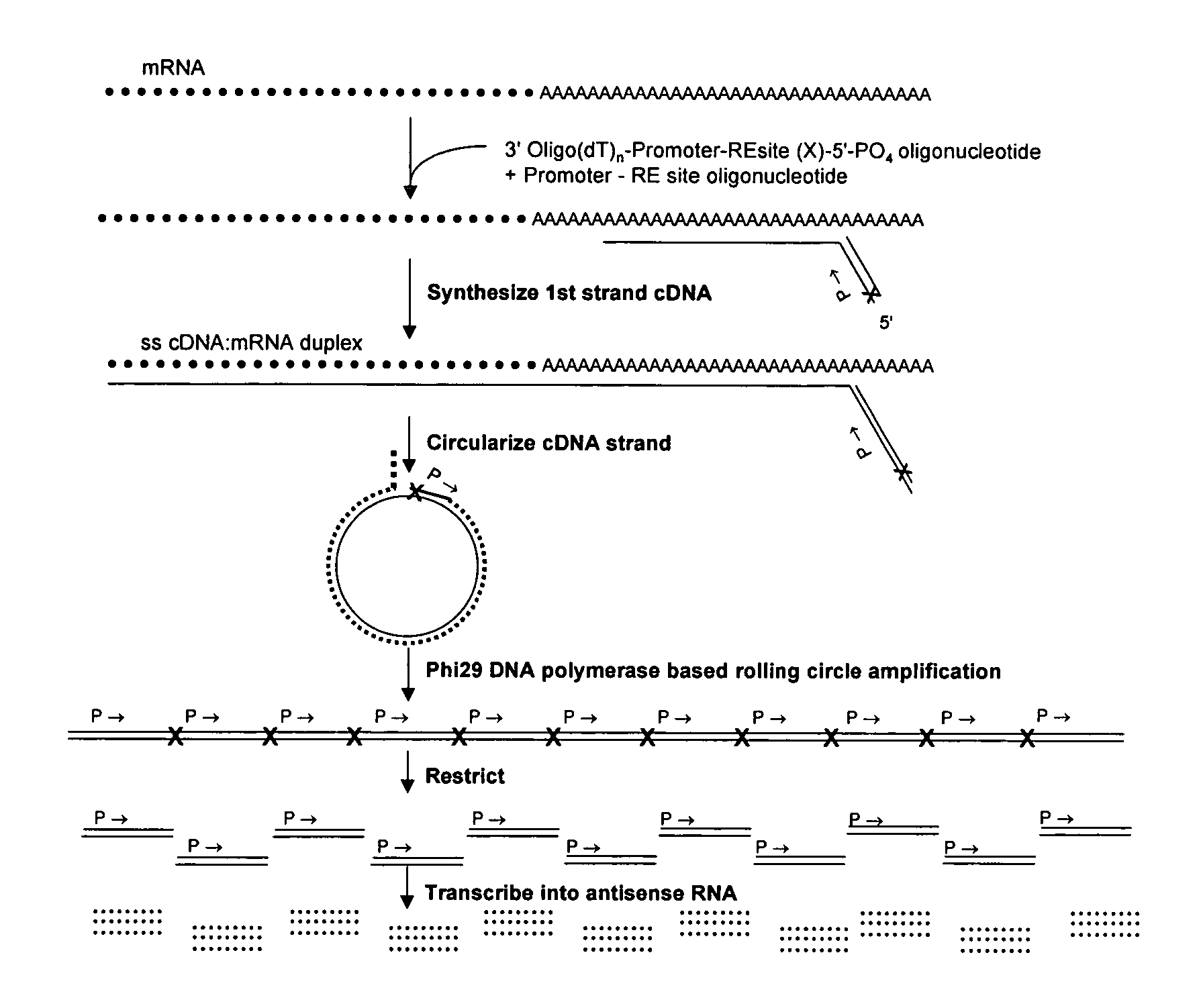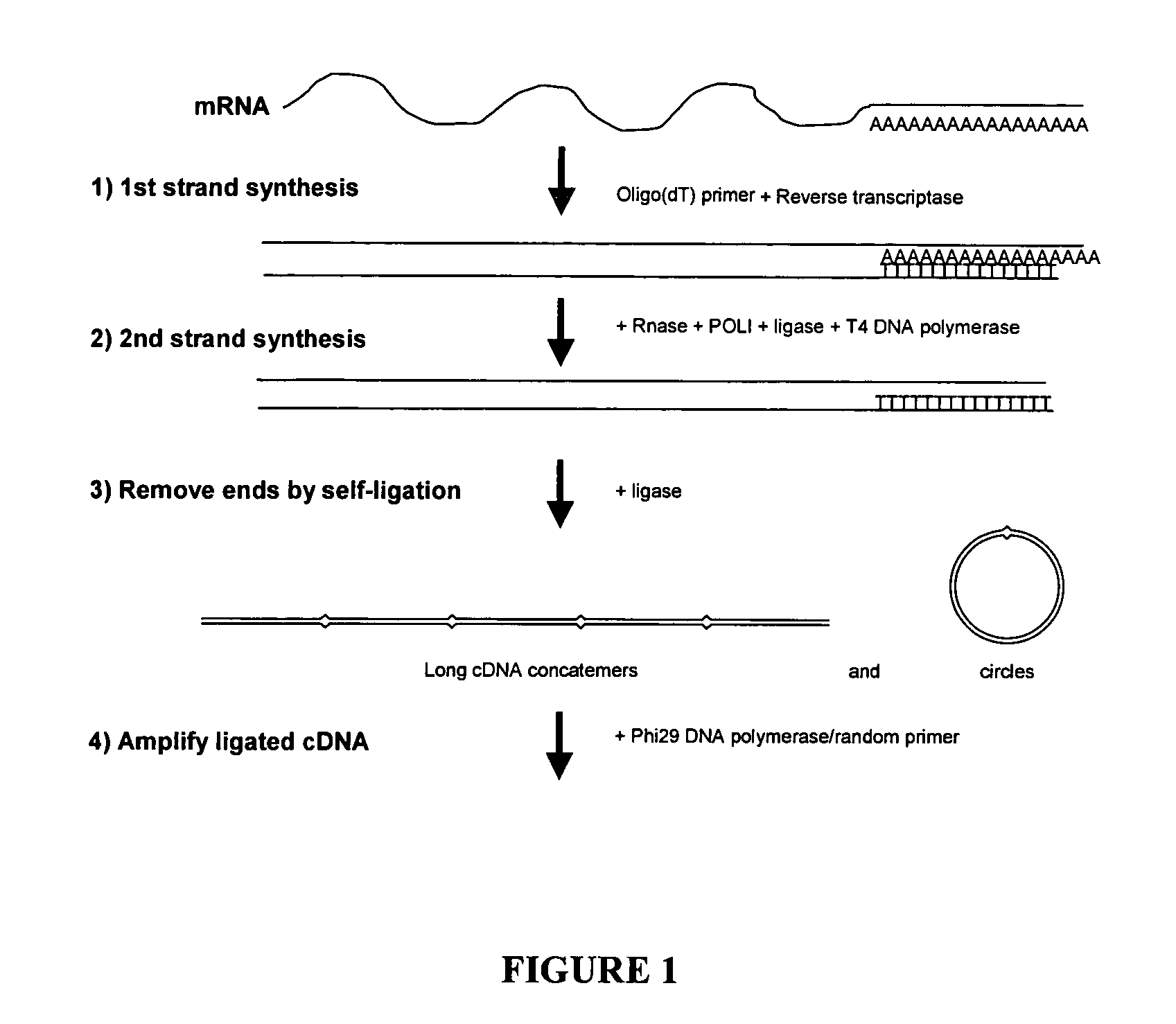Amplification of self-ligated, circularized cDNA for expression profiling
a technology of cdna and amplification, applied in the field of nucleic acid amplification and expression profiling, can solve the problems of inability to use the polymerase chain reaction to amplify, the amplification reaction cannot proceed continuously, and the amplification reaction must be carried out, so as to achieve less complex amplification and more consistent output
- Summary
- Abstract
- Description
- Claims
- Application Information
AI Technical Summary
Benefits of technology
Problems solved by technology
Method used
Image
Examples
examples
[0091]The following examples illustrate certain preferred embodiments of the instant invention but are not intended to be illustrative of all embodiments. These examples should not be construed as limiting the appended claims and / or the scope of this invention.
Amplification of cDNA Using Phi29 DNA Polymerase
Protocol
Part 1—ds cDNA Synthesis
[0092]1. Using total RNA samples (100ng-10 μg), generate double stranded cDNA following Timesaver cDNA synthesis kit protocol (Amersham Biosciences). Be sure to use 5′ phosphorylated NotI / P-T7 / oligo(dT)24 primer. (sequence 5′ phosphateGCGGCCGCGTAATACGACTCACTATAGGGTTTTTTTTTTTTTTTTTTTTTTTT3′) (SEQ ID NO: 1)[0093]2. To prepare samples for Phi29 DNA polymerase based amplification the cDNA is purified by ethanol precipitation (add 1 / 10th volume 1.5 M NaOAc / 250 mM EDTA and 3 volumes of 100% ETOH. Centrifuge 30 minute in a microfuge.).[0094]3. Resuspend in 10 μl of dH2O.[0095]4. The recovery of cDNA can be determined if desired (picogreen or agarose gel e...
PUM
| Property | Measurement | Unit |
|---|---|---|
| diameter | aaaaa | aaaaa |
| diameter | aaaaa | aaaaa |
| temperature | aaaaa | aaaaa |
Abstract
Description
Claims
Application Information
 Login to View More
Login to View More - R&D
- Intellectual Property
- Life Sciences
- Materials
- Tech Scout
- Unparalleled Data Quality
- Higher Quality Content
- 60% Fewer Hallucinations
Browse by: Latest US Patents, China's latest patents, Technical Efficacy Thesaurus, Application Domain, Technology Topic, Popular Technical Reports.
© 2025 PatSnap. All rights reserved.Legal|Privacy policy|Modern Slavery Act Transparency Statement|Sitemap|About US| Contact US: help@patsnap.com



